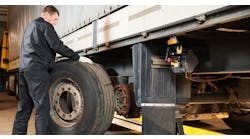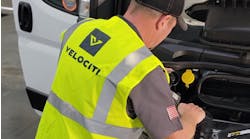Recognizing that unforeseen emergencies for vehicle technicians and drivers can occur at any given time, maintenance and repair shops always should have an up-to-date and fully stocked first aid kit readily available. Having the right assortment and quantity of first aid supplies on hand, and acting quickly, can decrease the severity of injuries and illnesses, and even positively impact productivity.
One of the most significant changes to the ANSI/ISEA Standards for Workplace First Aid Kits and Supplies is the introduction of two classes of first aid kits, based on the assortment and quantity of first aid supplies. First aid kits are no longer designated by the “number of persons” that they will serve.
- Class A kits include contents designed for the most common types of workplace injuries, such as minor cuts, abrasions and sprains. These kits are intended for workplaces that are not considered high-risk zones.
- Class B kits include a broader range and quantity of supplies to deal with injuries in more complex or high-risk environments where personal protective equipment is required.
By expanding the items on the basic first aid kit, employees have greater access to items needed to treat common workplace injuries.
The changes go into effect June 17, 2016.
KIT DESIGNATIONS
Many first aid supplies previously identified as being recommendations are now required for both newly designated kit types.
First aid kits are also now designated by Type – I, II, III or IV, depending on the work environment in which they are to be used. For example, Type I identifies kits used indoors and permanently mounted to a wall or other structure. Type IV kits are intended for mobile industries and/or outdoor applications and must pass tests for corrosion, moisture and impact resistance.
Regardless of the type of first aid kit, a best practice is to inspect and maintain them on a regular basis as some supplies have expiration dates.
The American National Standards Institute (ANSI) issues and updates numerous standards related to workplace safety. The International Safety Equipment Association (ISEA) is an accredited standards developer.
Julie Graham is safety product manager for Lawson Products (www.lawsonproducts.com), an industrial distributor that carries a comprehensive line of products and provides inventory management services to the industrial, commercial, institutional and government maintenance, repair and operations (MRO) market.



